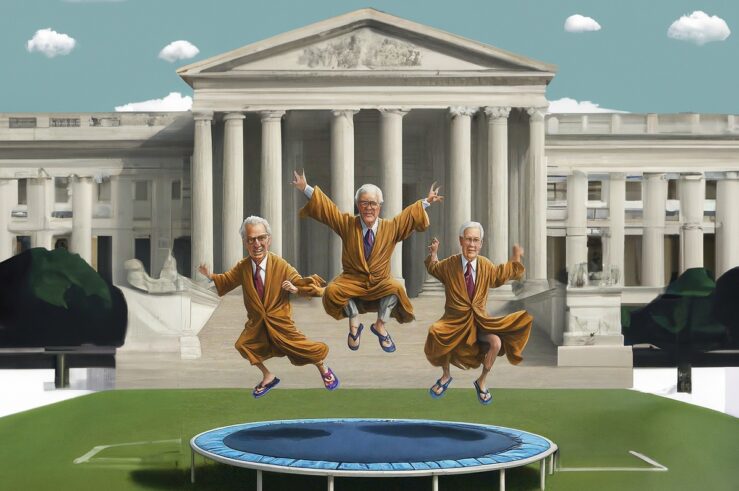In an op-ed published in Saturday’s W$J (slightly updated version available here for free), Prof. David Bernstein drew attention to the American Bar Association’s proposed revision to its law school accreditation standards concerning student and faculty racial diversity. Bernstein criticized the ABA proposal for, in essence, calling on law schools to ignore constitutional and statutory provisions governing the use of racial preferences in admissions and hiring. Indeed, the revision’s interpretive guidelines (which apparently carry the same weight as the standards themselves) state that:
the requirements of a constitutional provision or statute that purports to prohibit consideration of gender, race, ethnicity or national origin in admissions decisions is not a justification for a school’s non-compliance with [the diversity standard].
It thus seems that Bernstein is not exaggerating when he claims that the ABA is attempting to put its own political agenda above the law.
The ABA, of course, says otherwise. In a letter in yesterday’s W$J (free copy here), the ABA president says that “David E. Bernstein unfortunately misrepresents the impact of proposed revisions to the ABA Standards for the Approval of Law Schools,” for a law school would not be required to consider race and ethnicity in its admissions process.
I don’t intend to weigh in on the debate over the ABA diversity standards — except to say that Bernstein’s view that the ABA is calling for law schools to ignore laws that conflict with its own agenda is consistent with my experience with the Association of American Law Schools (AALS). My own institution has recently gone through re-accreditation, and the direction we received from the AALS regarding our heroic efforts to diversify our student body and faculty suggest that the organization will be satisfied with nothing less than results — regardless of constitutional or statutory impediments. As an untenured faculty member, I’m reluctant to say more about what went down at my school (I thought of posting the AALS’s letter, but that would likely be frowned upon). I will therefore leave the debate regarding the ABA’s diversity standards to Bernstein (blogging at Volokh) and the others who have weighed in on that issue.
I do want to note, though, that this is not the only context in which the ABA and the AALS have sought to put themselves above the law. They’ve taken a similar stance toward the antitrust laws. First, the ABA imposed accreditation standards that collusively increased faculty salaries and thereby raised the barriers to entry into legal education. The Justice Department sued the ABA over those standards, and the association entered a consent decree settling the lawsuit and agreeing to alter its competition-reducing rules.
The AALS’s antitrust conspiracy, on the other hand, continues. As law professors throughout the land well know, the days in which lateral employment offers may be extended are waning. Pursuant to AALS “good practices,” member law schools have agreed amongst themselves not to make permanent employment offers to law professors at other law schools after March 1 (or, for offers to visit, after March 15). In other words, a group of competitors, who are not engaged in any sort of joint venture, have collectively agreed not to compete with each other after a certain date for what is undoubtedly their most important input. Imagine if Ford and GM, who must prepare models for the new season and therefore need some lead time for their design teams, agreed that they would not try to poach each others’ engineers after a certain date. That would clearly be a per se violation of Sherman Act Section 1. Similarly, the agreement among AALS members to restrict their competition for professors would seem per se illegal.
Even if the agreement is not illegal per se, it cannot withstand rule of reason scrutiny. As Royce Barondes and I argued in a recent essay (Should Antitrust Education Be Mandatory (for Law School Administrators)?, 38 U.C. Davis L. Rev. 1299 (2005)), the restraint at issue has a substantially adverse effect on competition and provides no countervailing procompetitive virtues, and its legitimate ends could be achieved less restrictively. (I won’t bore you with the details of our rule of reason analysis — an SSRN version of the essay is available.)
As they exercise their powers to regulate (i.e., restrict) who may enter the legal profession, the leaders of the ABA and AALS would do well to remember John Adams’ little maxim about this being “a government of laws and not of men.”




